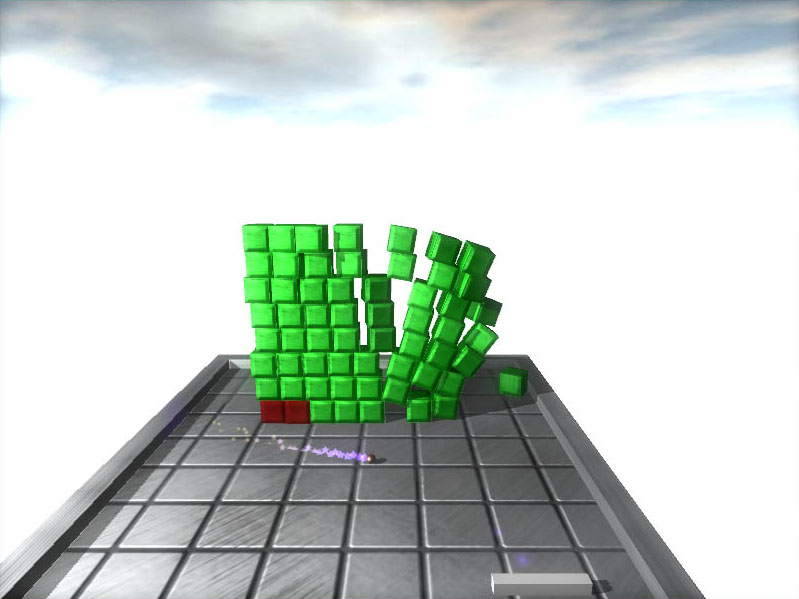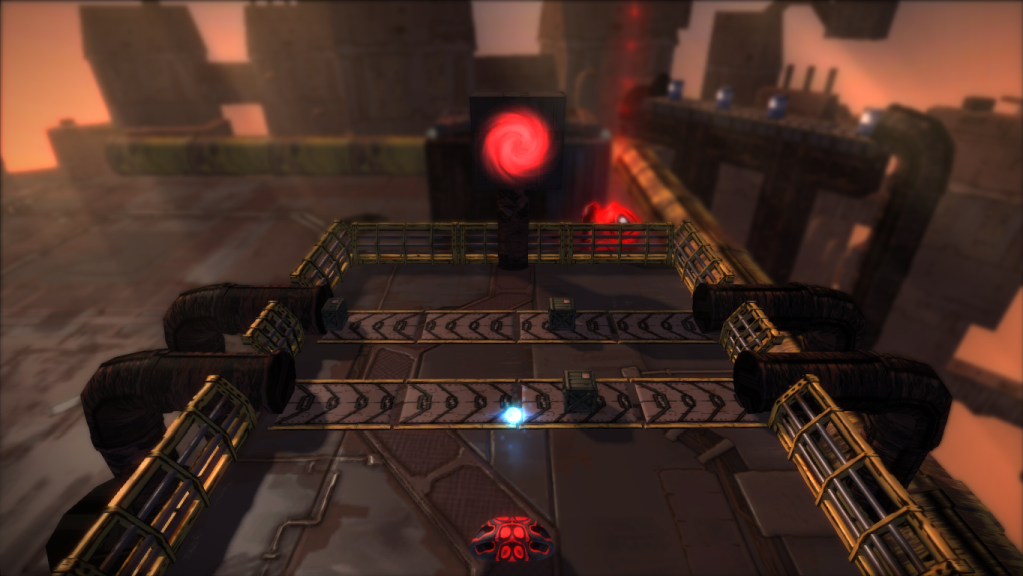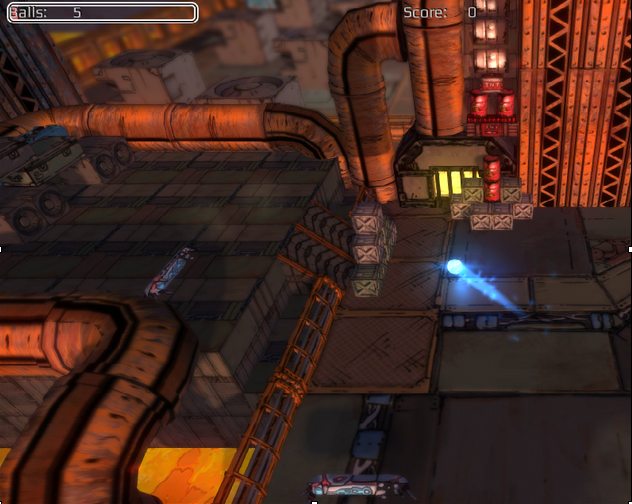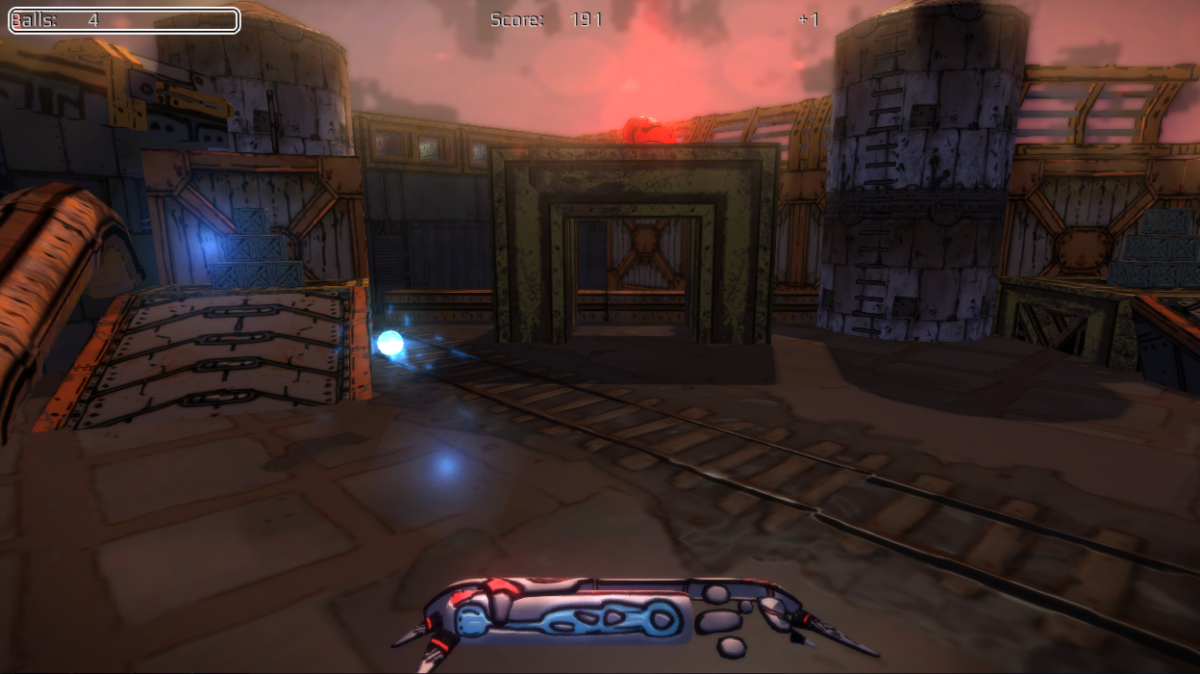For the past couple of years, me and some friends have spend one day each week working on
Caromble!, which is essentially a Breakout-style game. In this article I would like to share some of our observations on the genre, and I'll discuss how and why we created an evolved Breakout of our own.
The basics
Let's start by asking what made the original Breakout fun. The first mechanic that stands out is when you manage to get the ball behind a lot of objects, where it keeps bouncing and destroying lots of bricks. Even though you have little actual interaction at this point, it feels awesome. You are tearing this wall down! Eventually you might lose the ball because you're too busy watching the fireworks, but it never feels unfair. You were simply unable to move the paddle on time.
The other thing that I really like about a good brick-breaking game is getting the final few bricks. There is no more chaos, but you have much more control. Where you could clear the first bit of the stage by just keeping the ball in play, getting those last few blocks requires skill. No more surprises, no more uncontrolled destruction. You can only finish the level if you sit down and take your time to aim.
Those two things sum up Breakout for me. Together they form a very powerful combination. You get to cause a chain of events over which you have no direct control, but you have very direct control over the most important bit in the game world.
In that sense, Breakout is a little bit like pinball, where the ball shouldn't reach bottom of the pinball machine. You also have a good measure of control when you hit the ball, but it is outside of your control afterwards. This is an important observation, because pinball machines have lots of cool features that usually don't find their way into the brick-breaker style of game. Like lots of blinking lights, and physical effects that keep the game interesting to watch.
Chaos++
One can also discover some limitations of the classic Breakout and pinball machines. They limit the amount of moving parts - too much chaos just was not possible technically. Wouldn't it be much more fun if the elements would fall down and interact with each other after they are hit? This game just screams for a physics engine, which can make destruction very entertaining. One of our team members wrote a
blog post about this the other day. It boils down to the fact that deep down we are still children that just love to topple over stuff.
Surprise and unpredictability is a satisfying addition - stacks of bricks are much more fun to destroy. Even a simple structure, such as the wall in the picture, will collapse differently every time you hit it. But we have to make sure that the other important aspect of the gameplay, the amount of control, is unaffected.

Maintaining control means being very careful with what we let the physics simulation do, and where you have to have more direct control. We solved this by keeping control of the ball movement by our own code, while the physics simulation handles pretty much everything else. The blog post I mentioned goes into this with more detail.
What's outside the box?
Going to 3D also means you'll have to provide some answer to the question of what's going on outside the playing area. What are those indestructible walls and what is behind them? Here you can really use your imagination. Why not place the playing area on top of a driving car, or a spaceship?

For Caromble! we had the idea of simply placing the first playing area inside the second area. When you start the level you can't get outside of the walls, but as soon as you've cleared the first stage, the ball will grow. The indestructible walls are now part of the stacks of bricks in the second area. This screenshot shows that effect. You can see the next area waiting for you just behind the walls of this one. This is also a nice way to do some foreshadowing of what's going to happen in the next area.
The Camera
Now is a good moment to think about where you are going to place the camera. Having a camera high above the action will give the player a perfect sense of where the ball is. In terms of control this is excellent. However, it is not the best way to show all the action you have going on in the background, and you can't show glimpses of what is going to come soon either.
A low camera angle gives nice scenic images. The stacks of bricks are towering above the player and the effect of being in a three dimensional world is at its strongest. But it is hard to get a good sense of where the ball is located and at what speed it is moving.
We find ourselves constantly playing around with the positions of the cameras.
Pinball
One thing that pinball machines have in common, is several flippers. Why not try multiple paddles too? This leads to all sorts of cool new things you can try.

One option is to add separate areas to a stage, that you can reach by hitting a ramp. And we even made some platform-game like side scrolling levels. Or levels where you get to jump from building to building. Also for levels with some puzzle elements, having more than one paddle is great.
Power-ups
You can't have Breakout without power-ups. Growing and shrinking paddles, faster and slower balls, extra balls, all either influence the amount of control you have, or the amount of chaos you can unleash. Since 'Caromble!' is set in 3D, we can have power-ups that weren't available to the developers of the original. For example the jump power-up. It allows the player to jump over obstacles and can be used as a challenging gameplay element.
Another power-up that I'm personally fond of is the frog-view power-up. It lowers the camera until it is right above the paddle. You get to see the game from quite a different perspective, and it is quite challenging to keep the ball in play.

Caromble!
In this article I've touched on some of the many things that you can do with a Breakout-style game. Our initial motive to create a game like 'Caromble!' was to have a simple little game that we would actually finish and release. But along the way we really fell in love with the genre. The brick-breaker type of game is a great platform to build upon.
Starting from a classic game mechanic is great, because you know exactly what players expect. It is a great challenge to invent new things that they won't expect. I think that is what was really driving us along the way. There is just so much you can do with such a simple concept.
We've added a lot of our ideas to 'Caromble!', but there must be so many more ways to expand on the old classic. We are very curious to see what other people will come up with.
 Maintaining control means being very careful with what we let the physics simulation do, and where you have to have more direct control. We solved this by keeping control of the ball movement by our own code, while the physics simulation handles pretty much everything else. The blog post I mentioned goes into this with more detail.
Maintaining control means being very careful with what we let the physics simulation do, and where you have to have more direct control. We solved this by keeping control of the ball movement by our own code, while the physics simulation handles pretty much everything else. The blog post I mentioned goes into this with more detail.
 For Caromble! we had the idea of simply placing the first playing area inside the second area. When you start the level you can't get outside of the walls, but as soon as you've cleared the first stage, the ball will grow. The indestructible walls are now part of the stacks of bricks in the second area. This screenshot shows that effect. You can see the next area waiting for you just behind the walls of this one. This is also a nice way to do some foreshadowing of what's going to happen in the next area.
For Caromble! we had the idea of simply placing the first playing area inside the second area. When you start the level you can't get outside of the walls, but as soon as you've cleared the first stage, the ball will grow. The indestructible walls are now part of the stacks of bricks in the second area. This screenshot shows that effect. You can see the next area waiting for you just behind the walls of this one. This is also a nice way to do some foreshadowing of what's going to happen in the next area.
 One option is to add separate areas to a stage, that you can reach by hitting a ramp. And we even made some platform-game like side scrolling levels. Or levels where you get to jump from building to building. Also for levels with some puzzle elements, having more than one paddle is great.
One option is to add separate areas to a stage, that you can reach by hitting a ramp. And we even made some platform-game like side scrolling levels. Or levels where you get to jump from building to building. Also for levels with some puzzle elements, having more than one paddle is great.

